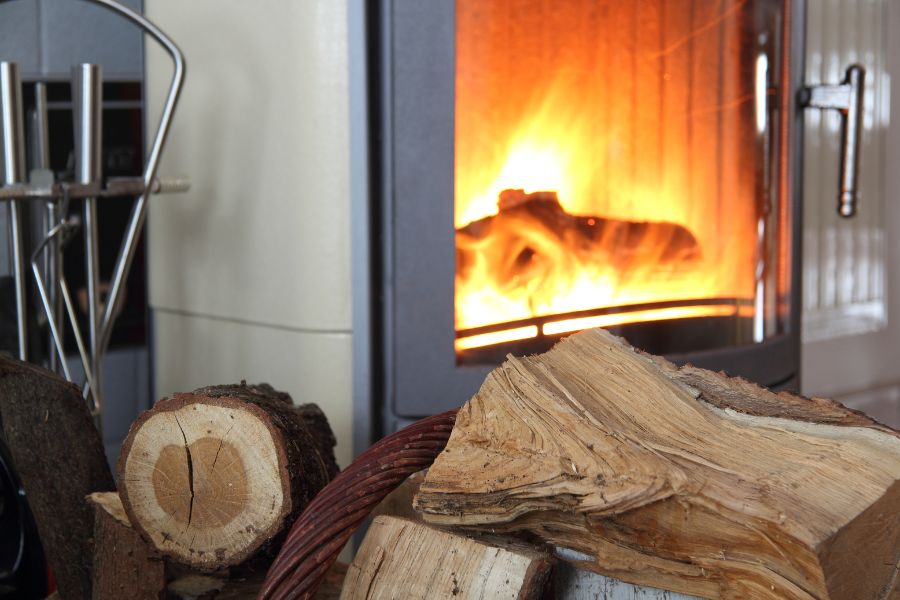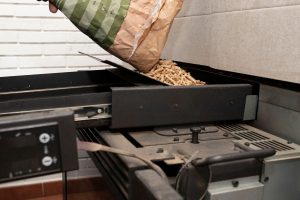
Pellet stoves have revolutionized the way many homeowners approach heating. Unlike traditional heating methods, a pellet stove uses wood pellets, which are both eco-friendly and efficient. But how do you light a pellet stove? The process can be unique compared to other heating devices, and you need to understand it to use these stoves efficiently.
We’ll spotlight the simple ways to ignition a pellet stove and maintenance to ensure a warm, safe environment. In other articles, we highlighted helpful household tips like reusing domestic furniture and cleaning your rug properly, so feel free to stop by.
Now, let’s dive in.
Pre-ignition Preparation
Before you even think of lighting your pellet stove, clean it first. The burn pot, for instance, should be free of any remnants from prior use.
Ensuring a clean burn pot is not just about efficiency; it’s also a safety measure. These stoves’ extremely flammable wood pellets can ignite undesired materials left behind. We wouldn’t want uneven burns or potential hazards now, would we?
Also, the choice and quality of wood pellets are paramount. Not all wood pellets are created equal. The best ones are those with a low moisture content. These extremely flammable wood pellets burn more efficiently and produce consistent heat.
Before starting the ignition process, inspect the pellets. Open the stove’s hopper lid and fill it with the pellets, ensuring they’re free from any foreign debris.
Setting the Right Temperature
Every pellet stove requires an intuitive mechanism for the user to interact with. It often comes as a control panel. Located typically on the side or front of the stove, this panel sets the stage for the ignition process.
First, determine the desired temperature using the digital or analog display. Adjust the heat setting accordingly. Especially during colder months, you might want a higher temperature to produce heat more rapidly.
Desired Temperature and Heat Output
Once the desired temperature is set on the control panel, it’s crucial to understand how this impacts the stove’s performance.
A higher heat setting will command the stove to feed more pellets from the stove’s hopper into the burn pot for a more robust flame and quicker heating. Conversely, a lower setting conserves pellets, gradually warming the space. The front door of the pellet stove often has a glass panel allowing you to monitor the flame’s intensity and size. So, you can always determine if your heat setting aligns with your heating needs.
The Ignition Process
Modern pellet stoves boast an automatic ignition feature that works the same way an electric stove’s heating element works. However, this feature simplifies the process for the user. Once you select the desired temperature and heat setting and fill the stove’s hopper, initiating the ignition is as easy as pressing a button.
The stove takes over, feeding the right amount of pellets and using the built-in electric element to ignite them. Always close the hopper lid properly to prevent any disruptions.
Manual Ignition
Not all stoves possess the automatic ignition feature. In such cases, the user must manually ignite the pellets after setting the desired temperature and ensuring the stove’s hopper is filled with quality pellets.
This usually involves opening the front door and applying a fire starter or gel to the pellets in the burn pot. Afterward, you’ll initiate the burn with a long lighter or match.
Once the pellets catch fire and produce heat consistently, close the front door to maintain the internal temperature.
Post-ignition Monitoring and Adjustments
After igniting the stove, keep an eye on the flame through the stove’s front door. A steady, bright flame indicates optimal burning. While a flickering or dull flame might suggest issues with the pellets’ moisture content or air intake. The appliance’s control panel often has indicators or settings to adjust these variables, ensuring a more consistent burn.
Door Management
The front door isn’t just an observation point; it plays a crucial role in the stove’s overall efficiency and safety. Ensuring a tightly sealed door prevents smoke and other byproducts from entering the living space.
Additionally, it maintains the temperature inside the burn pot, thereby boosting efficiency. Some stoves even feature alerts or indicators on the control panel if the door isn’t sealed correctly.
Regular Maintenance and Safety
Routine maintenance is paramount to keep your pellet stove running efficiently. The auger, which feeds pellets from the hopper to the burn pot, should be inspected for signs of wear or jamming.
Similarly, the drip system and ashtray need regular cleaning to prevent build-up, which can hinder performance. Refer to the owner’s manual for specific maintenance instructions tailored to your model.
Safety Precautions
Pellet stoves, while environmentally friendly, are still fire-based appliances. So, respect their potential risks. Ensure adequate ventilation in the room, especially if you notice excessive smoke.
However, keep flammable materials away from the stove, and always consult the instruction manual if any process or setting is uncertain.
Step-by-Step – How Do You Light a Pellet Stove
So, now that you’ve got your pellet stove installed and ready to go – it’s time to fire it up! Here’s how to properly light your pellet stove for the first time:
Gather Your Supplies
You’ll need a few essentials: pellets, matches or a lighter, and starter gel (optional but helpful). Check that your hopper has enough pellets to run the stove for a few hours.

Open the Air Vents and Start the Feed System
Locate the air vents on your stove and open them completely. This provides plenty of oxygen for starting the fire. Next, prime the feed system by filling the auger tube. You may need to refer to your stove’s manual for specifics.
Add Starter Gel (Optional)
If you have starter gel, place a few drops on the pellets in the burn pot. It speeds up the lighting process. Light the gel with a match or lighter.
Light the Pellets
Take a match or lighter and hold the flame to the pellets until they start smoldering. Gently blow on the pellets until you see small flames appear. Add more pellets to the burn pot as needed.
Adjust the Settings
Once you have flames, adjust the air vents and feed rate to your desired heat output. Keep a close eye on the fire for 30 minutes to ensure the pellets feed properly and the flames remain lit.
FAQs
How Long Does It Take a Pellet Stove to Heat Up?
As a general rule of thumb, smaller stoves (up to 50,000 BTU) heat up in 15-30 minutes, while larger stoves may take 30-60 minutes. The pellet quality also plays a role, with premium hardwood pellets heating slightly faster than softwood pellets.
What Do I Do If the Fire Goes Out?
Don’t worry; it happens to the best of us. First, turn the stove off and wait at least 30 minutes for the unit to cool before re-lighting. Then, empty the firepot and vacuum out any debris. Next, refill the hopper and firepot with fresh pellets. Finally, re-light the stove by turning it on.
How Often Should I Clean My Pellet Stove?
For the best performance and safety, clean your pellet stove at least once a week during regular use. This includes emptying the ash pan, firepot, and hopper of any waste and vacuuming or wiping down the interior surfaces.
You should also schedule a deep cleaning at least once a month to remove built-up creosote and soot in the exhaust path and chimney. Neglecting regular maintenance can be a fire hazard and reduce heating efficiency. Besides, regular maintenance keeps it in tip-top shape regardless of how old it is.
There You Have It
We hope we’ve answered the question: How do you light a pellet stove? Operating a pellet stove is as easy as pie. As with any advanced appliance, always keep the instruction manual and owner’s manual close at hand.
These guides offer invaluable insights and solutions tailored to your specific stove model. Ultimately, a well-maintained and correctly operated stove warms your space.
